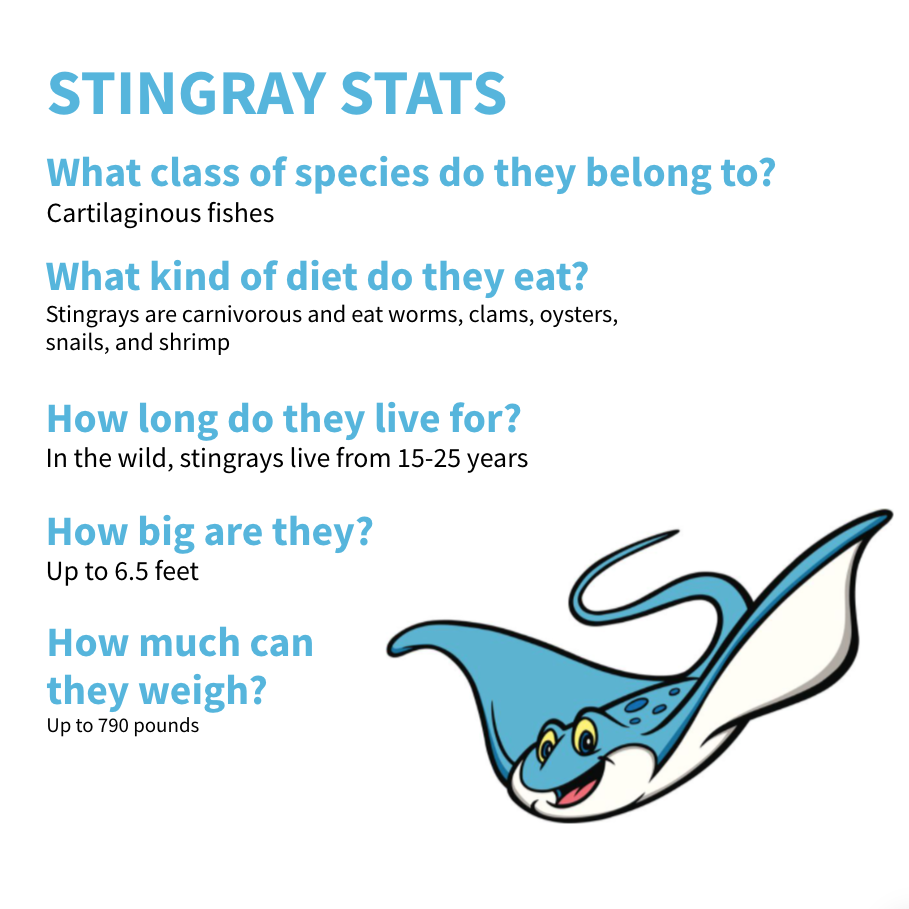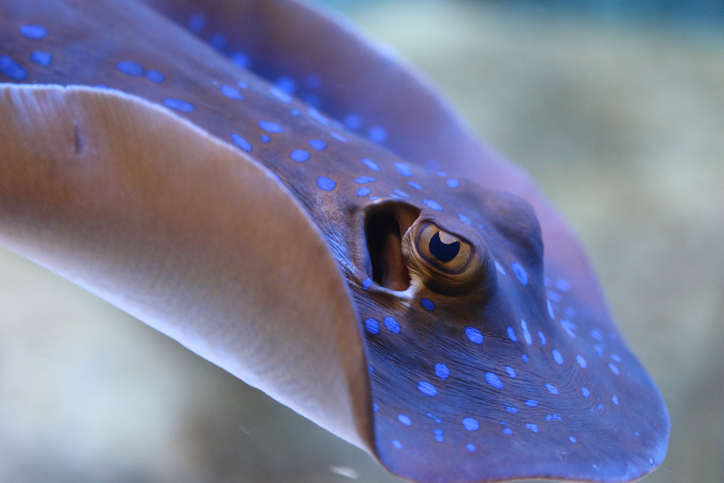Stingrays may look bizarre, but their peculiarities make them a super interesting animal to learn about – with their strange anatomies offering up plenty of odd facts and intrigue. That’s why we’ve put together a stingray deep-dive to look at their unusual anatomy in a little more detail.
From their fins and stingers to their eyes and mouth, we’ll take a closer look at the unique physique of the stingray to see how they function underwater. We’ll also share some facts and stats about these incredible creatures of the deep.

Bones
Surprising for some, stingrays are closely related to sharks. Well, just like sharks, stingrays don’t have any bones. Instead, their bodies are supported by cartilage, which is the same material that our ears are made from. This gives stingrays their bendy, flexible appearance.
Stingers
To defend themselves, stingrays have tails which they whip when threatened by a shark or other predator. Some types of stingrays have sharp, venomous spines along these tails, and these serrated or notched spikes can be lethal to would-be predators; they’re also dangerous to humans.
Luckily, stingrays won’t attack unless they feel threatened, and even then, its venom is only deadly when victims are attacked in the chest or abdomen. In fact, during Ancient Greece, stingray venom was extracted and used as an anaesthetic by dentists.
- In aquariums, keepers trim stingray spines for safety reasons
- However, those in the wild don’t get the same treatment, so divers, swimmers and those at the beach should be careful not to step on them to avoid a sting
- Expert divers shuffle their feet when entering the ocean to avoid stepping on a stingray’s back
- That said, while they can be dangerous, stingrays are generally placid around humans. Swimming directly over or in front of a ray, however, is a sure way to make it angry!
Fins
Stingrays have broad fins running the full length of their bodies, which give them their characteristic flat, round shape. And when they move, they move their whole bodies in a wavy motion that pushes them through the water. Indeed, it could be said that stingrays move more like birds than fish, flapping their fins up and down to propel them through the water.

Eyes
Stingrays’ eyes are perched on the top of its flat body, which might not seem like a very good place for them to go. But, having them here means they can continue to observe their surroundings, even when their bodies are buried under sand.
- When it comes to using their eyes for hunting, scientists don’t think they use them much
- Instead, stingrays have special sensors called ‘ampullae of Lorenzini’ which can detect tiny electrical charges emitted by their prey
- Once they track down their food using these sensors, dinner is served!
Mouth
Located underneath its body, a stingray’s mouth is perfectly suited to snacking on things like crabs, clams, and shrimp which dwell at the bottom of the ocean.
- Although they lack bones, stingray jaws are strong enough to crush rock-hard clam shells!
- Made up of several layers of thick, calcified cartilage, the softer cores of their jaws are supported by hollow struts
- This means that their jaws are both strong and lightweight at the same time!
Gills
Like its shark relations, stingrays breathe with the help of gills. They have a row of five gill slits located on the underside of their bodies.
- Their gills have membranes covered with thin sheets of soft tissue containing millions of blood vessels. When water passes over these membranes, the oxygen moves from the water and into the stingray’s bloodstream.
- Along with these gills, stingrays also have an extra adaptation to help them breathe when having a well-earned rest on the bottom of the ocean…
Spiracles
This extra adaptation, called spiracles, is located near their eyes and allows stingrays to bury themselves in the sand of the ocean floor and still breathe. They can do this by sucking sandy water in through their gills and clear water in through the spiracles, before forcing it out through their gills. Here, they can wait for prey to pass overhead before eating!
- Lying in wait for prey isn’t the only reason for hiding under sand
- Because of their sandy, brown skin, they can hide from predators such as killer whales and hammerhead sharks too
- And to really throw predators off the scent, they can stir up the sand with their wings while burying themselves headfirst, making it seem like they’ve disappeared in a cloud of coral and sand!
Enjoyed this look at one of the ocean’s most incredible creatures? Want to see some more of the most amazing animals of the deep for yourself? To purchase tickets for Blue Reef Aquarium Portsmouth, book online to take advantage of our discount offer here.
